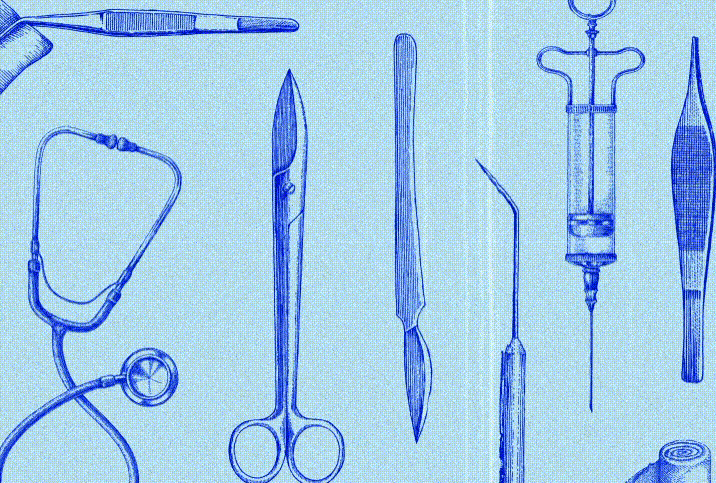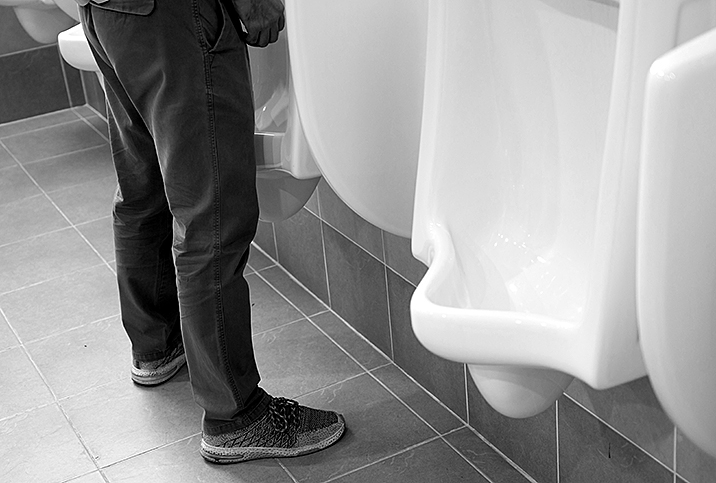Prostatic Artery Embolization Is a Less Invasive Option to Treat BPH

Many medical treatments are like a double-edged sword. For every type of surgery, patients must set aside a given amount of time for recovery. Pharmaceutical medicines famously come with side effects. Many new medical advancements rely on radiation, which is harmful in cumulative quantities of exposure.
Consider prostatic artery embolization (PAE), which exposes patients to radiation through X-rays. This procedure is performed by a radiologist and sometimes used (mostly in clinical trial settings) to treat benign prostatic hyperplasia (BPH), or noncancerous enlargement of the prostate gland.
"I think it has a role in the treatment of BPH and it has an important role for a very select group of guys," said Amin Herati, M.D., an assistant professor of urology at Johns Hopkins School of Medicine in Baltimore. "The group of guys that this procedure would be best for are guys who want a less invasive approach and management upfront, who want to preserve their sexual function and are willing to accept the recovery [process]."
So, what does this procedure entail, and what are the risks and controversies associated with it? And who exactly benefits most from PAE?
PAE and BPH basics
BPH is distinguishable, in part, due to the effects it has on urination. Common symptoms include an increased or frequent need to urinate (particularly at night), difficulty initiating urination, a weak or intermittent urinary stream, an inability to completely empty the bladder, and dribbling urine or urinary leaks after going to the bathroom.
Less common symptoms and correlating conditions to BPH include a complete inability to urinate, blood in the urine and urinary tract infections (UTIs). Urinary problems can occur because of a number of different conditions, but all of these common and uncommon symptoms can result from an enlarged prostate, which frequently occurs in men older than age 40.
Prostatic artery embolization may provide an alternative to more invasive procedures, such as surgery. Other noninvasive options for treating BPH are available, but some of those treatments are not always an option for patients with medicinal complications or they carry a reduced likelihood of success due to the patient's unique history.
PAE is performed by an interventional radiologist and involves the insertion of tiny catheters into arteries to occlude, or limit, blood supply to the prostate. PAE can only be scheduled at a limited number of medical facilities. The process is guided by the use of an arteriogram—an X-ray in which dye is injected into blood vessels—and can lead to reduced prostate size and relief of symptoms within days.
"It's been done for decades," said Kevin McVary, M.D., chairman of the American Urological Association BPH Clinical Guidelines Committee. He explained that embolization moved away from its original purpose, which created a degree of controversy.
Reason for controversy
Even though embolization is now guided by improved X-ray imaging techniques and can target problem areas more selectively, McVary said it is primarily touted by the radiology community and is still not widely used.
"Not widely, because it's considered experimental," he added. "The radiologists are advocating for it, basically for most or all prostate problems. And that's where the controversy comes in, because they don't have evidence—proper evidence—that shows a benefit."
Radiologists promote PAE because it is less invasive than surgery. While PAE for BPH certainly has its place, as Herati suggested, the AUA doesn't recommend it for treatment outside the confines of a clinical trial. Still, healthcare organizations such as Johns Hopkins Medicine and University of California San Diego Health, among others, are practicing and studying PAE intently, including conducting clinical trials. Yale Medicine, one of the few institutions performing PAE on BPH patients, points out that some insurance companies may not cover the procedure unless the patient meets certain conditions, such as having blood in the urine.
McVary explained that much of the research being used to emphasize PAE for the treatment of BPH and other conditions is conducted overseas, and is less dependent on regulatory and testing standards in the United States.
Specifically, he said, the numbers supporting PAE are not compared to clinical trial data from a typical control group; they are compared to alternative treatments as opposed to placebo procedures. Placebo (or sham) procedures are an important part of establishing scientific control groups in clinical trials that involve treatment procedures.
Studies underway in the U.S. may change that view soon, though, as more rigorous clinical trials are conducted.
Side effects and consequences
It can take about six months for the results of PAE to match those of its more invasive and surgical counterparts, said Herati, who is also the director of Men's Health and Male Infertility at Johns Hopkins. Symptom relief in either instance is typically about the same a year or two after a procedure, he added.
"But if it takes a significant amount of time to get to that point, then there are a number of complications that can ensue from prostate artery embolization," he said. "[Patients] can have off-target embolization, where the particles that embolize can go to other organs in the area, such as the bladder, or the reproductive organs, such as the seminal vesicles."
He added the prostate can swell after the PAE procedure, and some degree of tissue sloughing, or shedding, may be required before patients start to experience symptom improvements.
The recovery process can also include something Johns Hopkins calls "post-PAE syndrome," which may persist for several days and includes pelvic pain, painful or frequent urination, nausea, vomiting and fever.
Other potential risks include infection, hematoma at the incision, bladder spasms, and blood in the urine, semen or stool after the procedure is completed.
Is PAE right for you?
PAE may be best for men who have few other options that don't come at the cost of sexual function.
"The main group of guys that I would say would be the best candidates are the ones who would not be candidates for the lesser invasive options that are currently available that preserve sexual function," Herati said.
He added that PAE may not be right for men suffering from BPH who have lower levels of glandular tissue known as adenoma. Higher levels of adenoma tissue equate to greater degrees of success in reducing the severity and symptoms of BPH.
Prostate health is something a lot of men don't think about until they've already begun experiencing symptoms of one condition or another. This is partially why annual examinations are an important part of the overall picture of a man's health. Working with a doctor can help detect problems before they become a crisis, and sometimes even before symptoms begin to manifest.


















